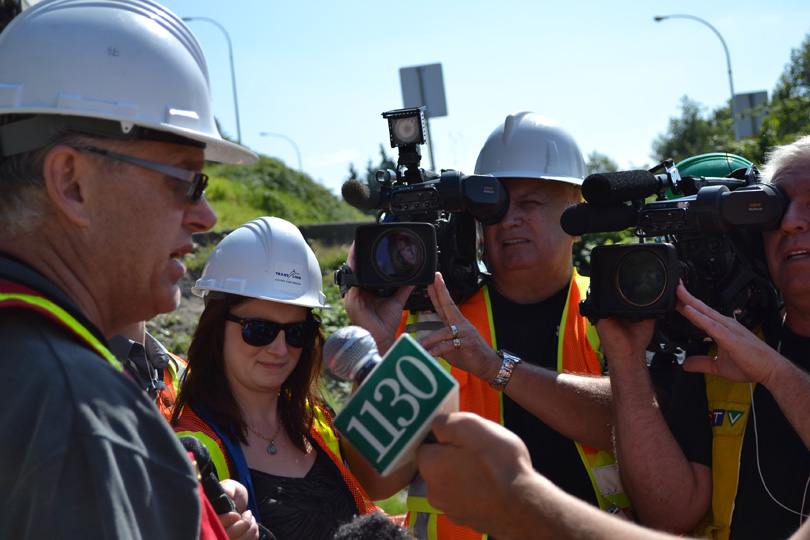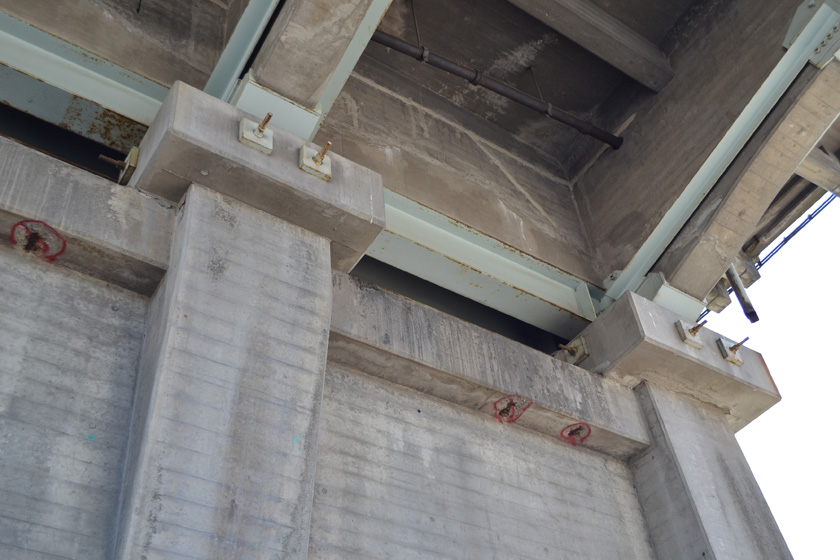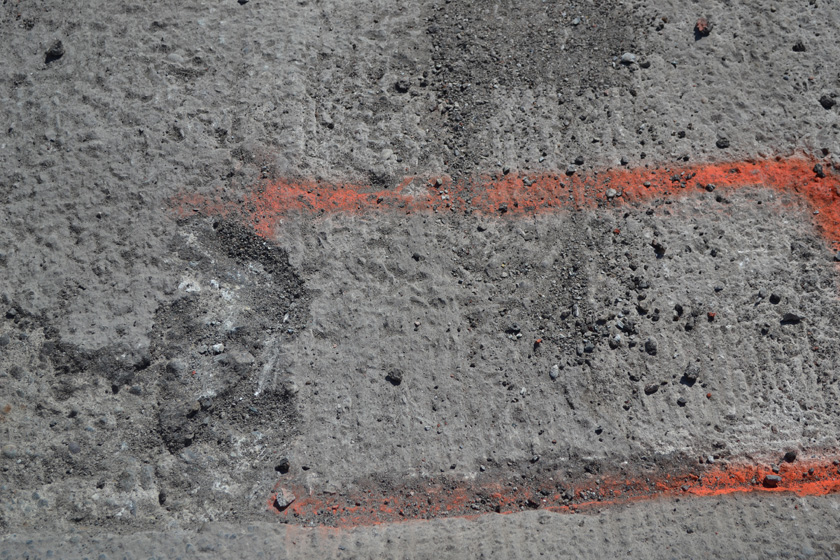Roads & Bridges: Up Close and Personal with the Pattullo Bridge
Roads & Bridges: Up Close and Personal with the Pattullo Bridge
 We’re devoting a handful of posts over the next couple of weeks to the roads and bridges TransLink is responsible for in the region. For the basics on TransLink’s roads and bridges, check out the Managing major roads and bridges in Metro Vancouver post from our TransLink 101 series.
We’re devoting a handful of posts over the next couple of weeks to the roads and bridges TransLink is responsible for in the region. For the basics on TransLink’s roads and bridges, check out the Managing major roads and bridges in Metro Vancouver post from our TransLink 101 series.
July 20th marked the first full day closure of the Pattullo Bridge summer weekend maintenance work. TransLink took this opportunity to invite local media to tour the 76-year-old bridge for a “behind the scenes” look at the work being completed. As the organizer of the event, I decided to take a few notes myself and share them with our Buzzer readers.
We began the tour by walking underneath the bridge, getting a close look at any fallen debris. I spotted a few chunks of fallen concrete on the ground, which seem to have originally been attached to the bridge. Our bridge operations manager (and our tour guide), Bob Moore assured me this is a sign of normal wear and tear of any bridge. “There is no structural risk or public safety concern (unless you’re standing underneath the bridge when the concrete falls!)” Bob says. He also adds “TransLink has identified the defected areas and will be repairing these areas as part of the maintenance work.”
We then walked up the stairs onto the bridge deck to see construction workers at work. They were jack hammering the bridge, creating extremely loud drilling noises and causing lots of dust particles to fly all over our faces. I’m glad everyone was wearing their safety vests, hard hats and steel toed boots!
Along the bridge you could see red rectangles marked throughout. Bob said those were identified as “delaminated areas, where horizontal cracks are formed in the concrete, allowing water to flow through and causing the rebar to expand and corrode.” In layman’s terms, the concrete cracks create potholes, the water gets in and the rebar (made of iron) rusts. Again Bob adds, “this is normal wear and tear for any aging bridge. This is why it’s important for us to address these issues, complete this maintenance work and ensure Pattullo will maintain in a state of good repair”.
What’s interesting to note is how the delaminated areas are identified. As a standard test, a 10 feet long chain is dragged across the bridge. The sound created from the chain and concrete hitting determines the areas of delamination. High pitch tones means the area is delaminated and low pitch tones means the deck is still solid and intact. After identifying the delaminated areas, workers then mark the areas in red (explains the multiple red rectangles), break the concrete, clean the rebar and loose concrete, pour grout and repave the area.
With over 77, 000 daily commuters traveling across the Pattullo Bridge, I’m glad to see the maintenance effort put forward to ensure this aging bridge is always in a state of good repair. This tour was both interesting and educational for this transit junkie. I hope you enjoyed reading about it as much as I enjoyed seeing it!
Author: Jiana Ling












A few technical questions…
Are there any ways to deal with the river’s effects on the piers, which are being worn away as the current rubs against it? Does the rate of wear increase as time goes on? Does the fact that the river is tidal at that point help to even out this wear somewhat?
And what lessons are we learning from maintenance work like this for our other bridges, such as the Golden Ears?
Hi Cliff,
We have installed rock protection around the river piers that could be vulnerable to scour. We have installed rock protection around the river piers that could be vulnerable to scour.
If it is warranted, we would place additional rock protection. The tidal effect just adds to the complex river activity at this location.
As for the lessons learned, many bridge maintenance issues occur as a result of design decisions. Today’s bridge designers benefit from access to maintenance data collected from over a century of modern bridge design and construction.
Hope these answer your questions.
Awesome answers. Thanks!